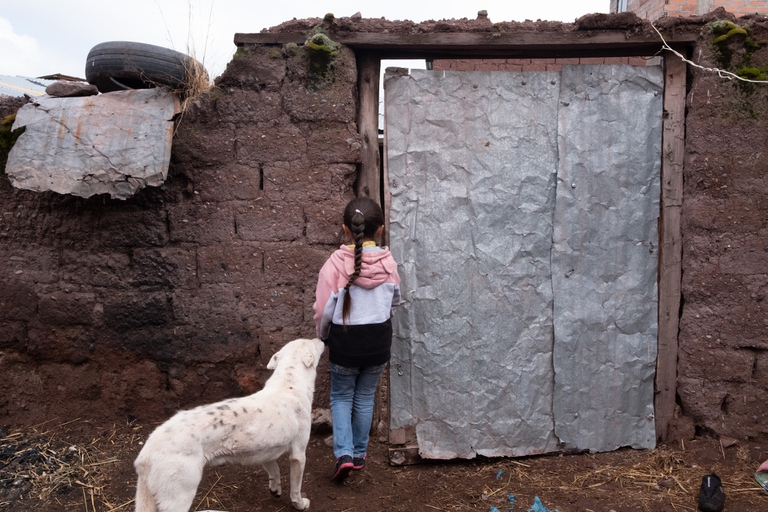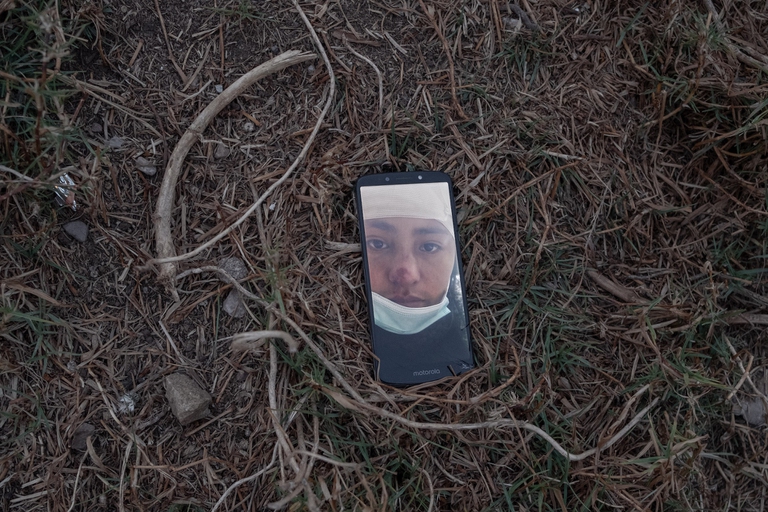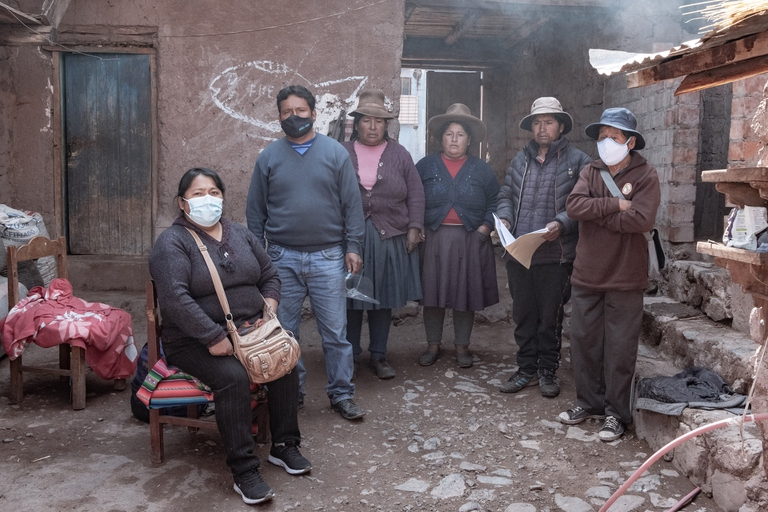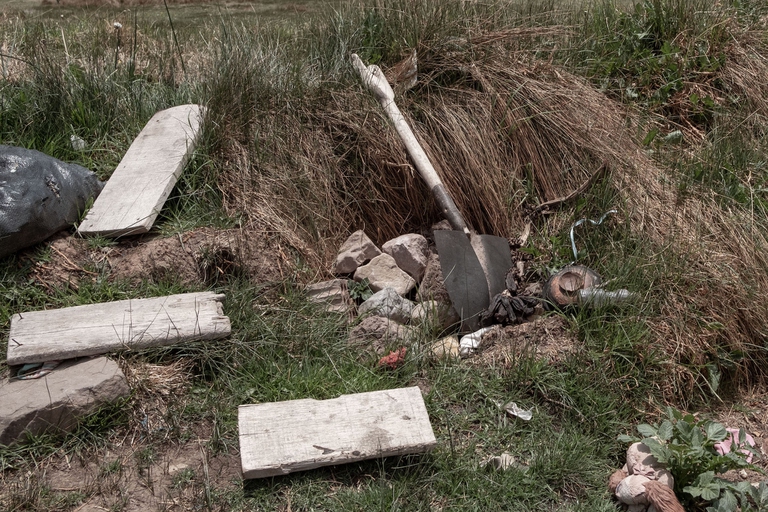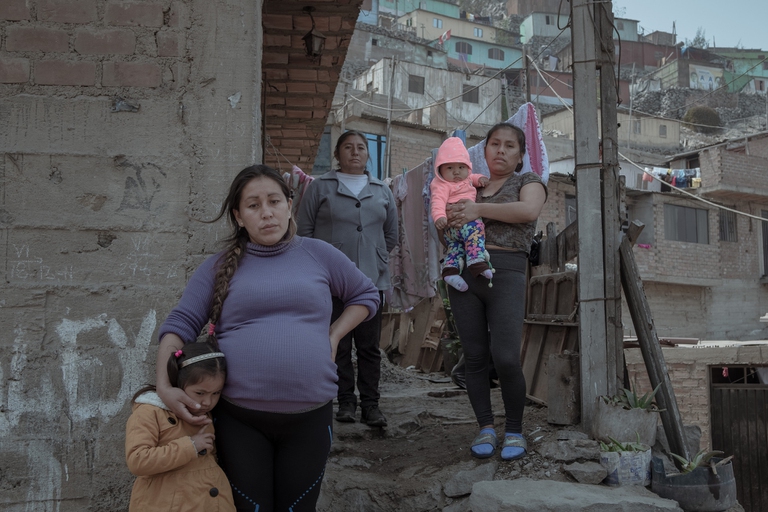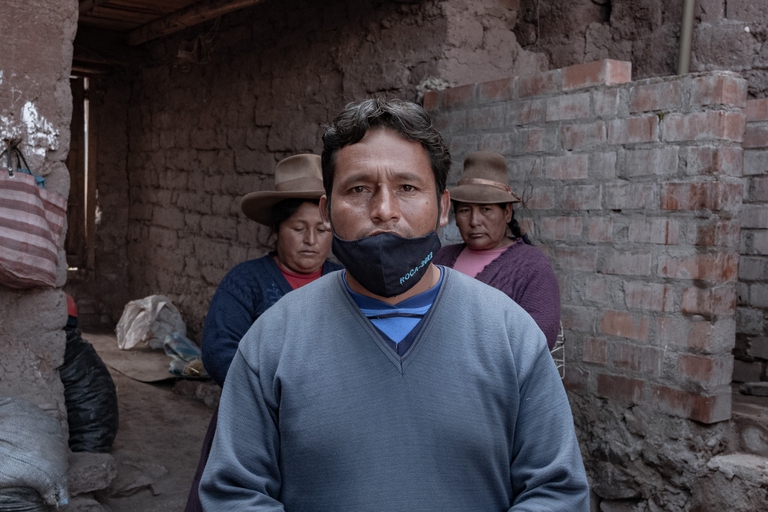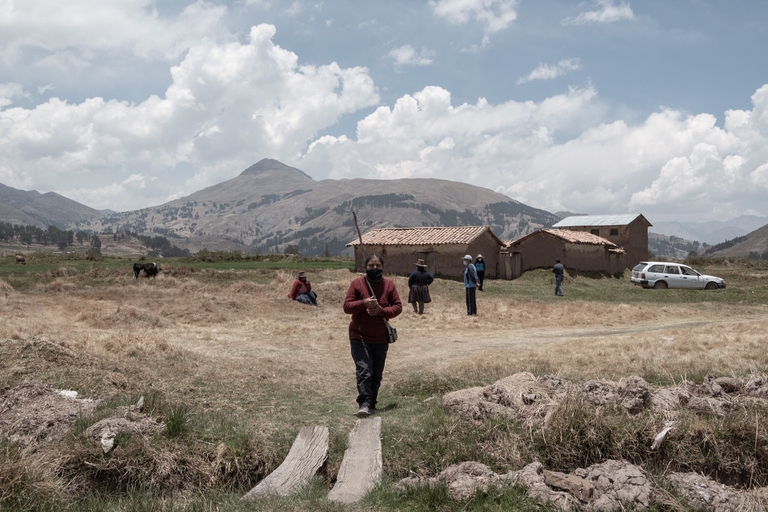
A new travelling exhibition, which is being shown in various parts of the Andean country Ecuador, seeks to make the important work of Ecuadorian women scientists visible. Because women need science and science needs women.
The consequences of the coronavirus in Peru go far beyond health and the economy as lockdown has led to the disappearance of thousands of girls and women.
Children are careful observers of the world around them. In this case, a young girl tells fragments of a larger story that only her mother can complete. Joys Estefani Qqueccaño Huamani, a 24-year-old indigenous Quechua woman, was last seen on the evening of the 9th of October. According to Chaska, earlier that day her uncle on her father’s side, Jesús Ccana, took her and four-year-old sister Illary to his house – an account confirmed by her family on her mother’s side – which is only some 30 metres away from where they were living with Joys Estefani.
In the last known photo of Joys Estefani, her face is bruised and head bandaged after being hit by her ex-partner and father of the two girls, Arturo Ccana Condori, 32. It was taken on the 28th of September and the assault was reported to the police. Arturo was arrested, but soon released. The attack took place a few weeks after Joys Estefani had separated from him: despite the rupture, they continued to live close to each other in the Pampa Ansa community, an open, arid valley of reddish land about three hours from the well-known city of Cusco.
The broken windows of Joys Estefani’s house still have blood on them. “We want justice, because the poorest are never listened to and women continue to be mistreated. That can’t be possible,” says uncle Nilo Qqueccaño with a broken voice and firm eyes. Yet the type of abuse endured by Joys Estefani is widespread in Peru. Figures concerning violence against women speak for themselves. From March to July, during the Covid-19 lockdown, the Ministry of Women registered 11,000 cases, with minors making up almost 30 per cent of victims.
Joys Estefani’s disappearance isn’t an isolated case either. In Peru, 14,912 people have been reported missing from January to November this year. According to official police figures, more than half are minors and 64 per cent are women. In many Latin American countries, Covid-19 has meant strict lockdowns and Peru is no exception. People have been confined to their homes for months, many forced to endure poor physical, economic and social conditions. A situation that, according to experts, has aggravated the situation of children and women living in abusive households, who have been locked up with the perpetrators.
“After the successive changes in the restrictive measures, the Ombudsman’s Office warns that the increase in adult women, girls and adolescents reported as missing remains constant,” Peru’s constitutional human rights organisation wrote in a note published earlier this autumn. Of particular concern is the high number of girls and adolescents who have disappeared during lockdown, potentially fleeing their homes or falling victims to crimes such as femicide, kidnapping and human trafficking.
Joys Estefani was just 15 years old when she was betrothed to Arturo, in what locals call a “peasant marriage”, a traditional Quechua arranged marriage. Her uncles suspected for years that she was being abused by her partner. However, she lived in a very closeted setting, in which most of her time was divided between her ex-partner’s family and the Evangelical church they regularly attended.
After their mother’s disappearance, Chaska and Illary stayed in police custody and were later handed over to their grandfather, since their father was considered a suspect in Joys Estefani’s disappearance, investigated as a murder case. “I’m afraid the Ccana family will make me disappear,” says her father René Qqueccaño, 44.
Visiting the abandoned home where Joys Estefani used to live is like entering a silent crime scene. Everything that was inside is now scattered outside. Toys, clothes, trash, broken glass. Recently turned soil can also be seen. Inside, there are red marks on the walls, one of which is shaped like a hand. As we approach the building, a noise can be heard, as if someone was inside – evoking parallels between Joys Estefani’s case and that of Marleny Estrada Bolivar, who was reported missing for almost two months in Lima, Peru’s capital, until her body was found buried under her own room. During the visit, Arturo’s relatives come around constantly, as their house is a stone’s throw away.
“My niece isn’t an animal, she has to appear,” says aunt Nalda Qqueccaño. Together with Joys Estefani’s uncles, as we move in front of the church the young woman used to attend with her ex-partner and his family, Arturo’s brother Jesús suddenly comes out, trembling with anger. From one moment to the next, questions and accusations are being levelled between the uncles and brother. “What happened to Joys Estefani? What have you done to her?,” the uncles want to know. “And if she appears, what happens? How are you going to respond? Surely, she’ll appear in a week,” answers Jesús Ccana. “Don’t mess with our church,” is his aggressive message to our photographer as he covers the camera with his hands.
According to the Ombudsman’s Office, 114 femicides were registered in Peru from January to November and as the number of disappearances increases month after month, it’s hard not to ask: why are so many girls and women disappearing?
“Our hypothesis is that the majority of minors could have fled their homes due to rape, physical and emotional violence or sexual abuse,” says Eliana Revollar Añaño, Deputy for Women’s Rights at the Ombudsman’s Office. “But we really don’t know why. And we don’t know how many are still missing, or how many have been found and in what conditions – alive or not. The lack of data is a serious problem”. “Minors who flee are a sign that we’ve failed as a society,” she adds.
As well as in Lima, there are also reports of missing persons in the Cusco area and in the city of Piura in northern Peru. It is estimated that underreporting in these regions is even higher. Family members often avoid filing complaints, partly due to a lack of trust in the authorities. “It happens a lot that families are blamed for the disappearances. Or these cases are simply explained away as crimes committed out of jealousy and that the woman was probably also a little to blame”.
These are the words of Katherine Soto Torres, who founded the group Mujeres Desaparecidas Perú (Missing Women Peru)in 2016 following the disappearance of her friend Solsiret Rodriguez under strange circumstances and in response to the perception that the authorities generally aren’t doing enough to search for missing women. She relates how several of the regions where many disappearances are reported house extractive industries, for example illegal mining: these areas are notorious for being hotbeds of human trafficking for sexual exploitation. The activist is particularly concerned about the situation in the Cusco region.
“The numbers are alarming. So far this year, more than 800 complaints have been reported, making Cusco the second region with most cases nationwide. However, we still don’t have a true nation-wide search system that records and disseminates all cases, in which alerts are immediately activated. If disappearances aren’t dealt with effectively, we won’t be able to prevent risky situations, much less find the victims alive,” says Soto Torres.
In the search for missing women, it is extremely important that the police act quickly. This can make the difference in relation to whether they’re found alive or not. “For example, in the cases of 28 women who were reported missing, if the search had happened quickly their lives could probably have been saved,” says Revollar Añaño. “But they were found dead. And many of the femicides occur in their own homes”.
The representative of the Ombudsman’s Office mentions the state of Arequipa in the south of the country. “Here, there have been 47 cases of disappearances during confinement and 43 of them have been found alive because searches were taken seriously. We must follow that example in the rest of the country”.
“We don’t have precise figures. Why do they disappear? A national policy is lacking,” Soto Torres adds. “The authorities must give answers to families. It is as if their history has been erased. As if your mother, daughter or sister never existed. The state is taking something away from these families by not giving an answer. Missing women aren’t just numbers, they’re human beings”.
Missing women aren’t just numbers, they’re human beings.
In mid-October, Martín Vizcarra, who was Peruvian president at the time, launched a new national search system: a registry in which information on missing persons is collated and centrally stored. “We have had some very painful cases that served as a basis for implementing our system of disappeared persons,” says Elsa Huallpacusi Hilario, advisor to the Ministry of the Interior, the highest authority responsible for searching for missing people. “All cases have received due treatment, but family members should collaborate much more. They report the disappearance of a relative, then they look for the person, find them and don’t tell the authorities”.
In the meantime, in Pampa Ansa, in between adults’ conversations Chaska’s few powerful words are like fragments of her thoughts. “My mum isn’t coming back“. As weeks went by without concrete news concerning the young mother, the community began to worry more and more. Coca leaves were read on the 6th of November in the search for information about her disappearance, ancestral custom in this part of the Andes. According to the reading, Joys Estefani had been killed and buried somewhere. That same day the police questioned Arturo Ccana. He confessed to having murdered Joys Estefani.
The community left for what was once the young woman’s home, arriving as police and Arturo also reached the property. He pointed out the place where he had buried the mother of his two daughters. Joys Estefani Qqueccaño Huamani’s body was found 90 centimetres underground. Her family finally got answers, though perhaps of the most tragic kind, as thousands of Peruvian families are still waiting for news of their missing mothers, daughters and sisters.
Siamo anche su WhatsApp. Segui il canale ufficiale LifeGate per restare aggiornata, aggiornato sulle ultime notizie e sulle nostre attività.
![]()
Quest'opera è distribuita con Licenza Creative Commons Attribuzione - Non commerciale - Non opere derivate 4.0 Internazionale.
A new travelling exhibition, which is being shown in various parts of the Andean country Ecuador, seeks to make the important work of Ecuadorian women scientists visible. Because women need science and science needs women.
Meet Gokul Subedi and Prakriti Mainali, the founders of two humanitarian organisations with one shared goal: to improve the lives of the most vulnerable and disadvantaged members of Nepalese society.
The Hijab ban has caused a major controversy in India after several Muslim girls were denied entry into a college for wearing the traditional headscarf.
Brazil’s Supreme Federal Court has indefinitely shelved a case that was set to drastically alter indigenous land right claims, leaving its fate uncertain.
Animal Equality reveals the brutality of Europe’s pig meat industry and illegal activities on farms for which many perpetrators haven’t yet been punished.
Jenu Kuruba, a honey-collecting indigenous tribe of India, accuses the local government of forcefully evicting them from the forest that is their home.
The state of women’s rights in Turkey is critical, and gender-based violence is increasing. The country’s withdrawal from the Istanbul Convention will only make matters worse.
One in three women have suffered physical or sexual violence. With contributions from Europe, Africa, Asia and Latin America, we look at how this shadow pandemic affects every corner of the world.
The Istanbul Convention against gender-based and domestic violence marks its tenth anniversary. We look at what it is, who its signatories are, and what the future might hold.
